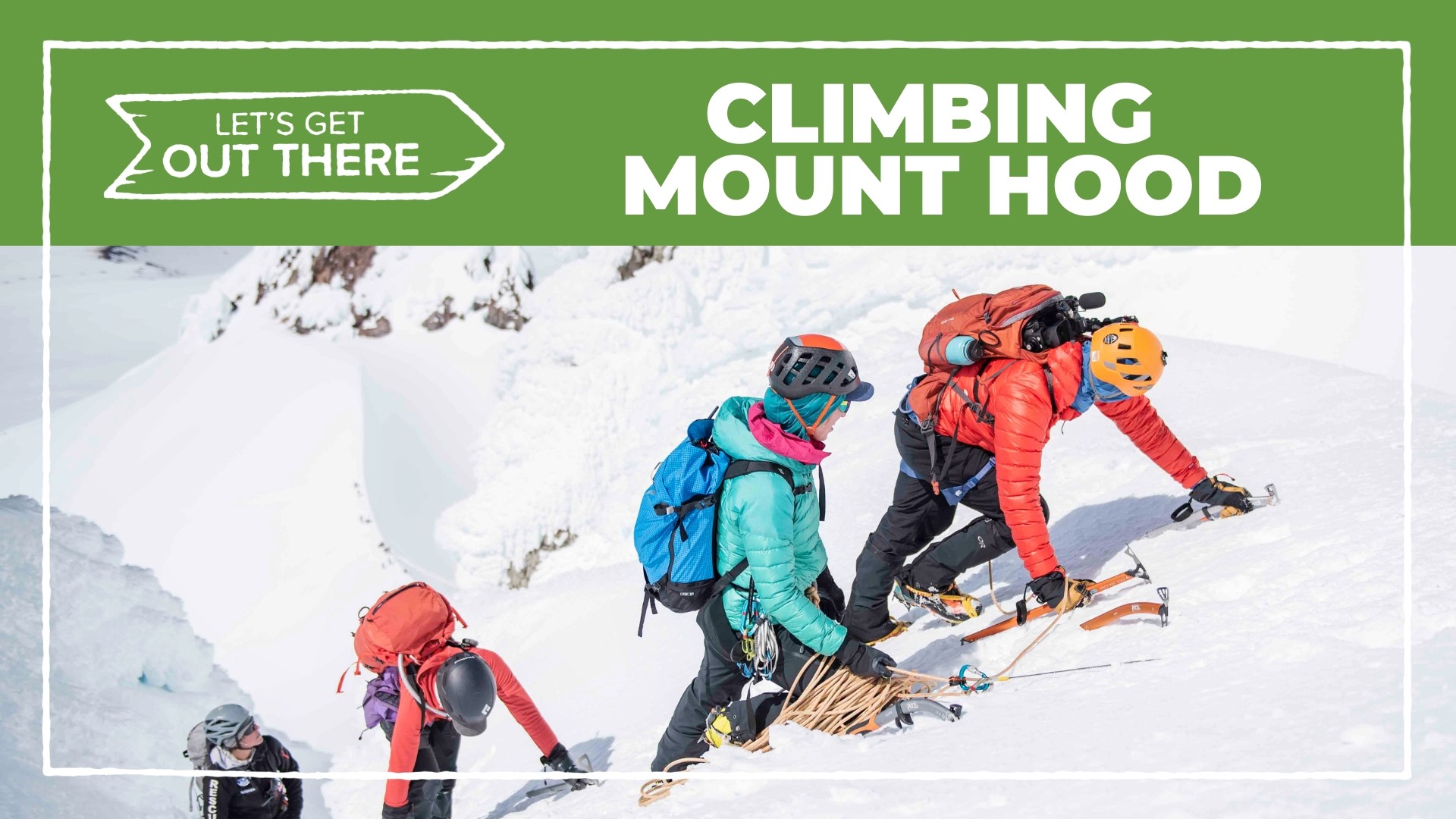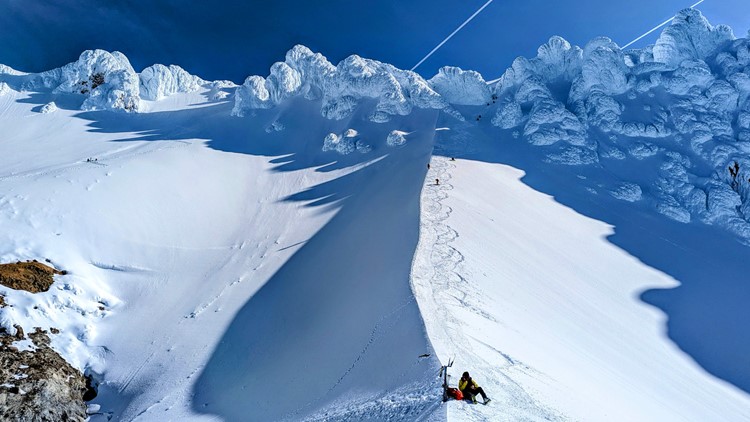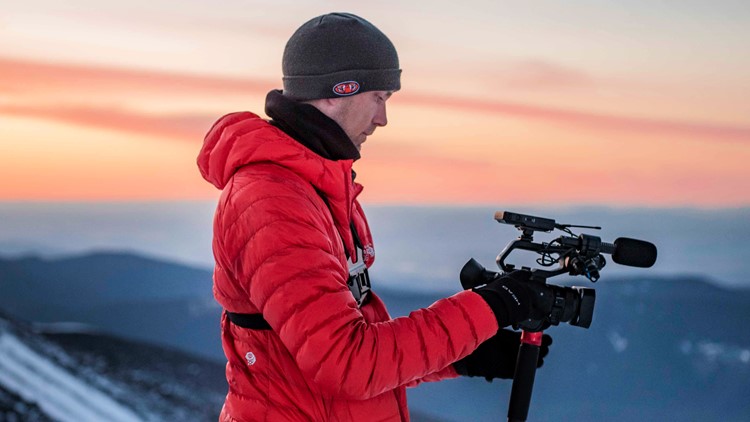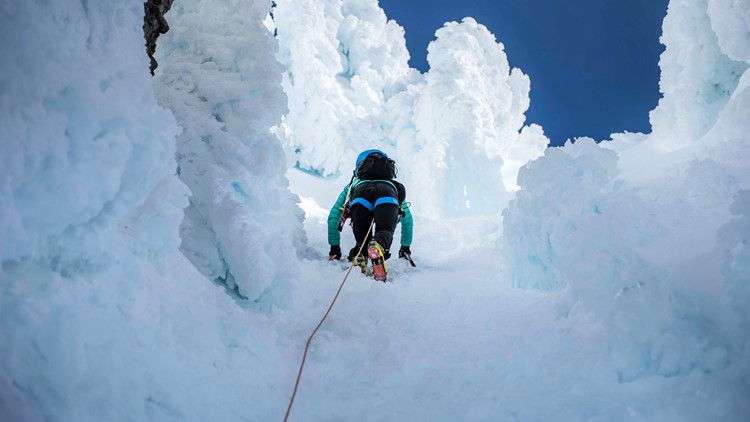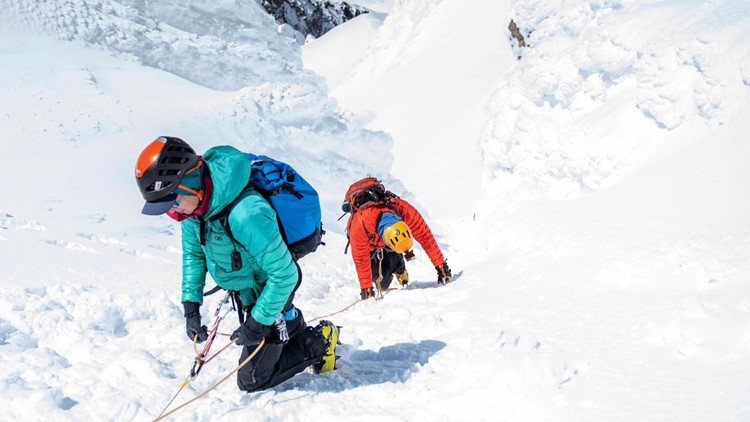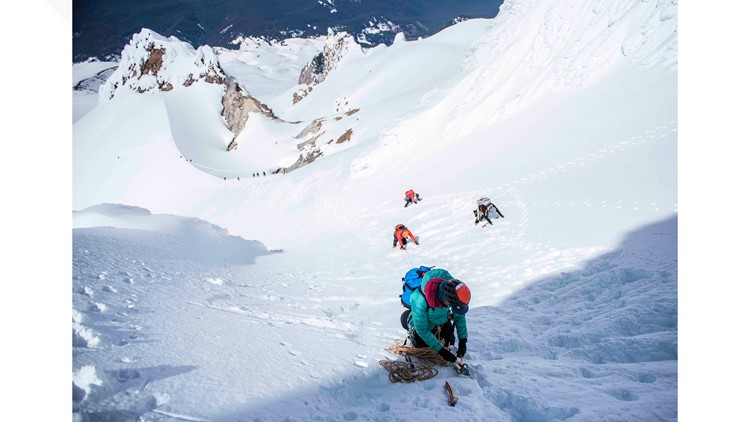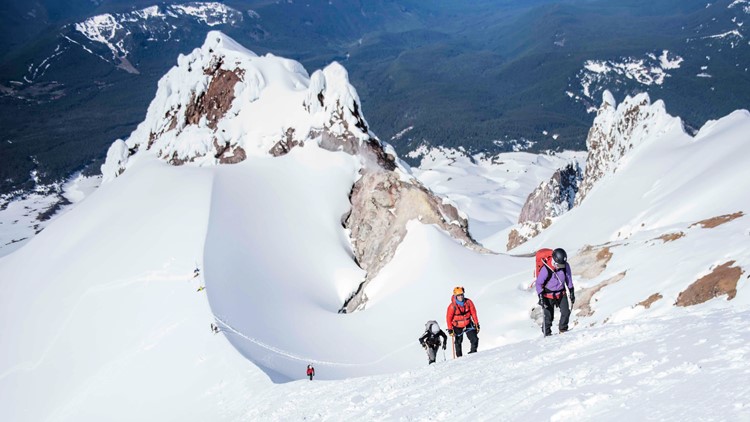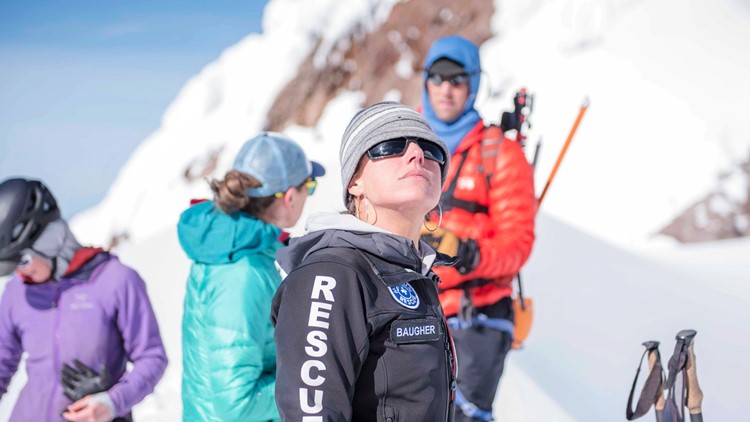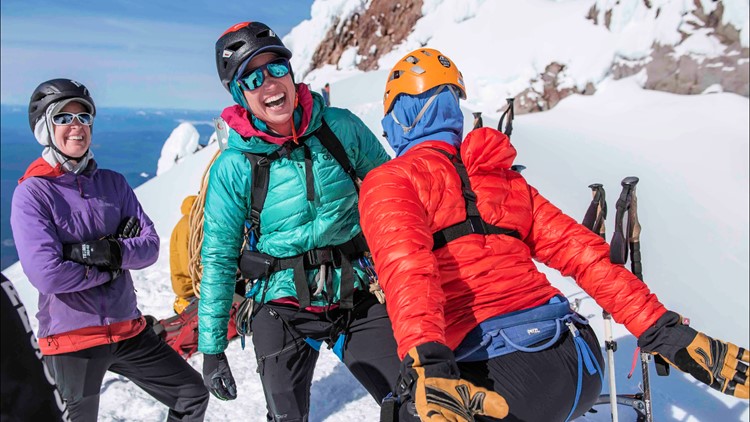MOUNT HOOD, Ore. — This week's Let's Get Out There is the conclusion of our three-week series taking us to the top of Mount Hood. Whether you have aspirations to climb it someday or you simply love finding a quiet trail in your neighborhood, we hope you're inspired to find as escape in the outdoors. A team from Portland Mountain Rescue let Jon Goodwin tag along for a summit attempt, and he wanted to share the experience.
An early morning alpine start at the Timberline Lodge parking lot is where the day begins for our summit attempt of Mount Hood, or as known by its Native American name, Wy’east. I met four members of Portland Mountain Rescue (PMR), all with impressive résumés. Teresa Dalsager is a former corporate VP, Jenna Wiley is an emergency medicine physician, Hayley Dukatz is a firefighter/EMT, and PMR rescue leader Paige Baugher is a biology professor with a PhD in molecular biology.
After about an hour of “pretend sleep,” the butterflies in my stomach chugged the adrenaline in my veins. For mountaineers, an early start is important so you can get off the mountain before the sun begins to melt snow and ice.
“The plan is to summit Mount Hood,” said Baugher as we huddled together for an exercise she called SARGAR, which stands for Search and Rescue, Green Amber Red. “We discuss each category and for each we're either green, which is a go, amber, which is hesitant, but we try to mitigate those risks and then red, which is a hard stop.”
The day was June 7 and about 5-10 inches of snow had just fallen on the upper mountain. It posed no serious threat to the safety of the climb, but the team emphasized remaining vigilant to conditions.
We then did a quick check of our avalanche beacons. If you step into an alpine setting, PMR says it’s essential to have the right equipment in case you get buried by an avalanche.
With gear packed and minds right, we hit the snow and began the slog to the top of the Palmer chairlift (elevation 8,500’). Big machines called snow cats groomed a trail from the climber’s lot at Timberline. This is the start of the south side route. It’s the most common and considered the easiest path to the top. As twilight approaches, the summit ridge’s impressive, cathedral-like features appear against a backlit sky. The group graciously made frequent stops so I could shoot video, and let’s be honest, because I was the slowest!
As the sun rose, the amazing sight of the mountain’s shadow stretching over the landscape is one I won’t soon forget. After snacks and a vibe check, we fastened crampons to our boots in preparation for the rest of the climb. Above Palmer, the mountain gets steep and you’re going to want all the traction you can get.
“Mount Hood is not just a walk-up mountain,” Wiley said. “It's not a hike, it's not a backpack and it requires comfort with using crampons and ice axes. It requires hazard-reading and risk mitigation and being able to trust your own skills but also be with people that you trust.”
I had the luxury of being with not only people I trusted, but true search-and-rescue experts. We soon arrived at the Hogsback as the sun peeked down into the crater. The Hogsback is a pointy ridge of snow with volcanic vents on either side called fumaroles. They emit a strong sulfuric aroma, and while this is a good spot to take a break, it’s good to keep moving so you’re not too affected by the poisonous gases. You also do not want to slide into the vents. PMR has made many rescues at and around the Devil’s Kitchen and Hot Rocks fumaroles.
“If you fall in, you can be looking at like upwards of like a 50-foot vertical fall onto a rock down below you and then you're trapping in this cylinder of snow and poisonous gases,” Baugher said. “And it's like the only place… in North America that search and rescue teams have to go pull people out of active volcano fumaroles.”
Ascending the Hogsback up to the Pearly Gates is where the climb begins to get technical. The steep grade is at 40 degrees in some spots. A slip can mean a fall of hundreds of feet, if not more depending on the fall line.
Dukatz and Baugher set picket anchors and tied my harness to a belay system, and we continued up to the Pearly Gates. The section had great boot pack and I was roped, so climbing here felt comfortable, but don’t let your guard down or lose your focus here. The narrow “gates” were covered in wind-blown rime ice — beautiful to look at but dangerous if the sun thaws it out, causing it to fall down on you.
“Mountaineering is a very specific activity, and it takes something special,” Dalsager said. “It takes all the guts and focus and determination and concentration and faith and hope and all the things that life throws at you.”
Once through the Pearly Gates, Dukatz took me off belay where the team could simply walk to the summit. It was a good final push I wasn’t expecting, but around 11:15 a.m., 9 hours after we began, we made it to the top. The views are incredible. You can see all the big Cascade volcanoes, back to Portland, even the I-205 bridge over the Columbia River. It was an achievement that brought supreme satisfaction and a reminder of just how small we are. This climb wasn’t about me, but I took away a renewed pride for these amazing women (and the whole PMR team) who volunteer to educate climbers and save lives on this mountain.”
PHOTOS | KGW's Jon Goodwin climbs to the top of Mount Hood
The views are incredible. You can see all the big Cascade volcanoes, back to Portland, even the I-205 bridge over the Columbia River. It was an achievement that brought supreme satisfaction and a reminder of just how small we are. This climb wasn’t about me, but I took away a renewed pride for these amazing women (and the whole PMR team) who volunteer to educate climbers and save lives on this mountain.”
“Historically, mountain rescue doesn't have a lot of women involved in it,” Baugher said. It’s something PMR has made an effort to change over the last few years. “I am incredibly proud of this training class, and we have such incredibly strong women. I mean, the three that you went up with today, incredibly strong women.”
“We're all volunteers, we show up because we want to give to this team, and that's a pretty powerful statement I think,” added Wiley.
“These women mean to me that you can be strong, you can be confident, you can be tough, you can be kind and compassionate, all at the same time,” said Dalsager. “And that will be appreciated and recognized.
Wy’east means different things to different people, and now I have a new respect for what that is. You may climb it, but you’ll never conquer it. Thanks to these pros, I got home safely and many lives have been saved thanks to PMR and other search-and-rescue groups on the mountain.
Let's Get Out there airs once a week on KGW's 4 p.m. newscast and The Good Stuff, which airs Monday-Thursday at 7 p.m. We're including viewer photos for this series. You can text your photos to 503-226-5088 or post them on the KGW Facebook page.

